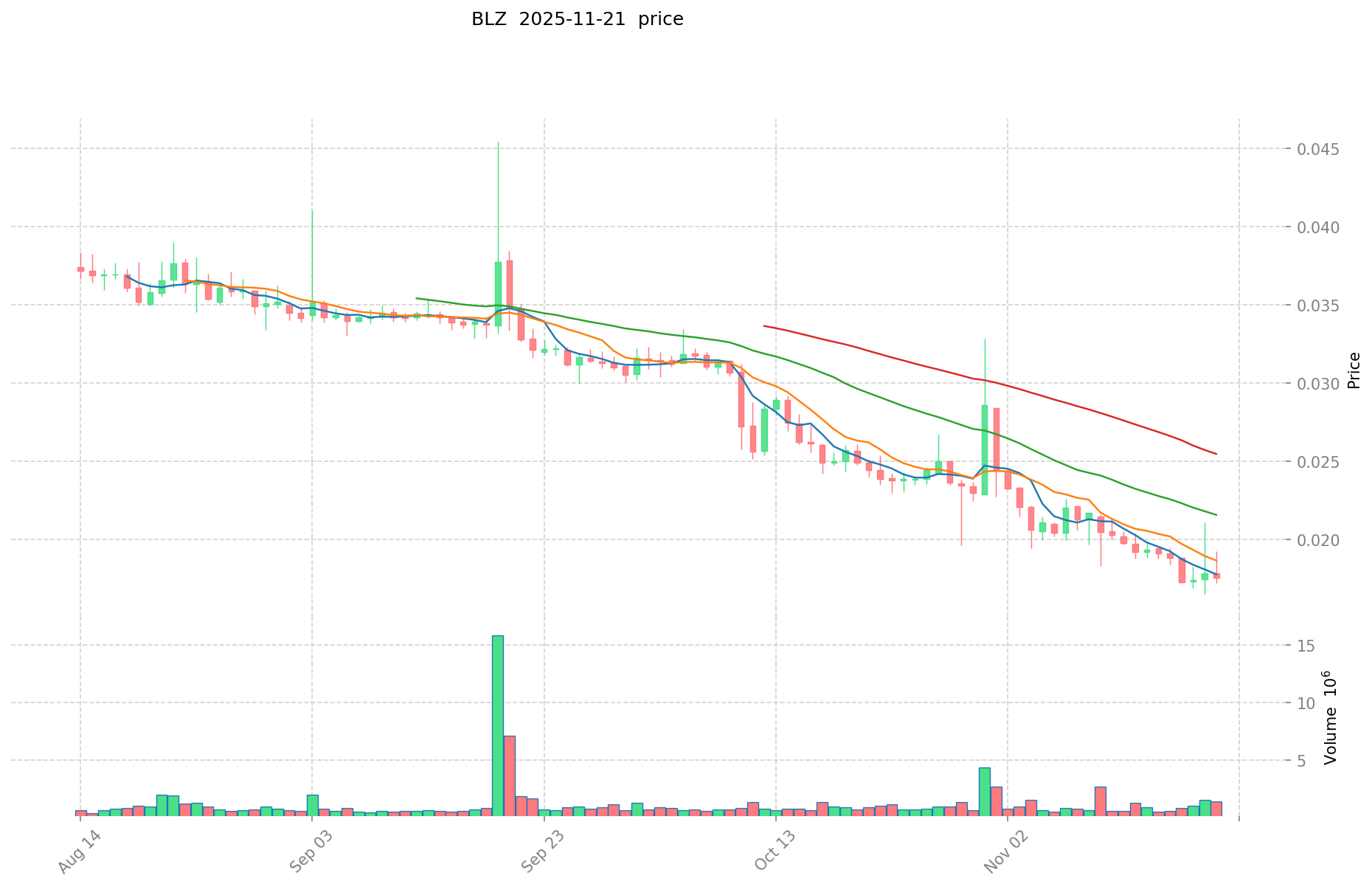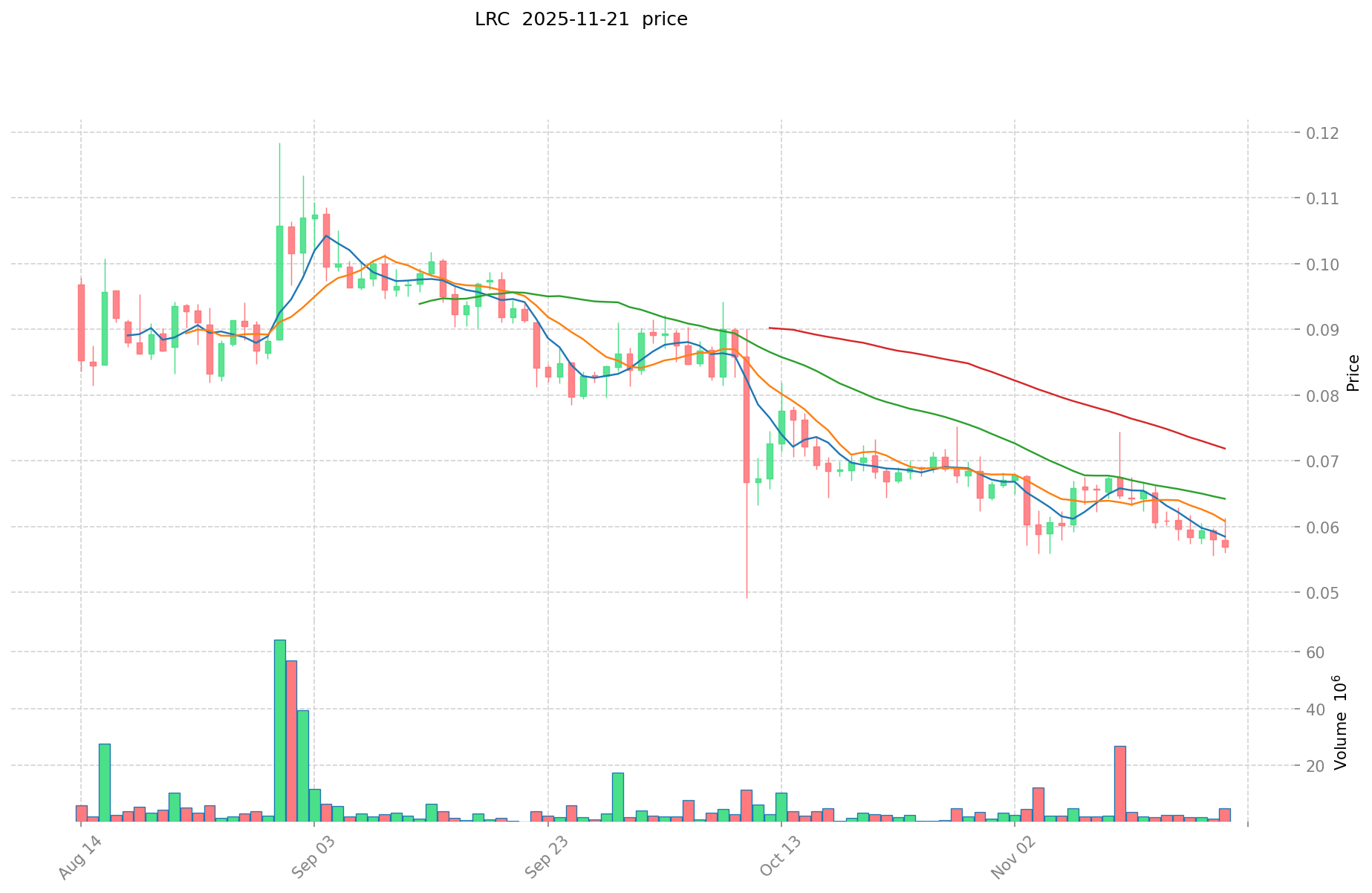BLZ vs LRC: A Battle of Blockchain Titans in the Decentralized Finance Arena
Introduction: Investment Comparison of BLZ vs LRC
In the cryptocurrency market, the comparison between Bluzelle (BLZ) vs Loopring (LRC) has always been an unavoidable topic for investors. The two not only show significant differences in market cap ranking, application scenarios, and price performance, but also represent different cryptocurrency positionings.
Bluzelle (BLZ): Since its launch in 2018, it has gained market recognition for its decentralized database services.
Loopring (LRC): Introduced in 2017, it has been hailed as a pioneer in decentralized exchange protocols, becoming one of the most traded cryptocurrencies globally.
This article will comprehensively analyze the investment value comparison between BLZ and LRC, focusing on historical price trends, supply mechanisms, institutional adoption, technological ecosystems, and future predictions, attempting to answer the question investors care about most:
"Which is the better buy right now?"
I. Price History Comparison and Current Market Status
BLZ (Coin A) and LRC (Coin B) Historical Price Trends
- 2021: LRC experienced a significant price surge, reaching its all-time high of $3.75 on November 10, 2021.
- 2020: BLZ hit its all-time low of $0.00654948 on March 13, 2020, during the global market crash.
- Comparative analysis: During the 2021 bull market, LRC saw a dramatic rise from its previous lows, while BLZ also experienced growth but to a lesser extent.
Current Market Situation (2025-11-21)
- BLZ current price: $0.01753
- LRC current price: $0.05453
- 24-hour trading volume: BLZ $17,329.83 vs LRC $238,342.10
- Market Sentiment Index (Fear & Greed Index): 14 (Extreme Fear)
Click to view real-time prices:
- View BLZ current price Market Price
- View LRC current price Market Price


II. Core Factors Affecting Investment Value of BLZ vs LRC
Supply Mechanism Comparison (Tokenomics)
-
BLZ: Fixed supply of 500 million tokens with a significant portion already in circulation
-
LRC: Deflationary model with token burning mechanisms from protocol fees and buybacks
-
📌 Historical pattern: Deflationary models like LRC's tend to create upward price pressure during high market activity, while fixed supply tokens like BLZ rely more on demand dynamics.
Institutional Adoption and Market Applications
- Institutional holdings: LRC has gained more institutional interest due to its role in Ethereum's L2 scaling solutions
- Enterprise adoption: LRC has stronger integration with decentralized exchanges and payment systems, while BLZ focuses on data storage and cloud services
- Regulatory attitudes: Both tokens face similar regulatory scrutiny, though LRC's connection to Ethereum may provide some regulatory clarity advantages
Technical Development and Ecosystem Building
- BLZ technical upgrades: Focused on improving decentralized storage capabilities and cloud computing infrastructure
- LRC technical development: Continuous improvement of zkRollup technology for Ethereum scaling, reduced transaction costs, and improved security
- Ecosystem comparison: LRC has deeper integration within the DeFi ecosystem, particularly in DEX infrastructure, while BLZ is more focused on decentralized cloud services
Macroeconomic Factors and Market Cycles
- Performance in inflationary environments: LRC's deflationary mechanism potentially provides better hedging properties
- Macroeconomic monetary policy: Both tokens show correlation with broader crypto market reactions to interest rate changes
- Geopolitical factors: BLZ's decentralized storage solutions may benefit from increased data sovereignty concerns
III. 2025-2030 Price Prediction: BLZ vs LRC
Short-term Prediction (2025)
- BLZ: Conservative $0.0147 - $0.0175 | Optimistic $0.0175 - $0.0182
- LRC: Conservative $0.0470 - $0.0547 | Optimistic $0.0547 - $0.0596
Mid-term Prediction (2027)
- BLZ may enter a growth phase, with prices expected in the range of $0.0123 - $0.0279
- LRC may enter a steady growth phase, with prices expected in the range of $0.0524 - $0.0691
- Key drivers: Institutional capital inflow, ETFs, ecosystem development
Long-term Prediction (2030)
- BLZ: Base scenario $0.0244 - $0.0302 | Optimistic scenario $0.0302 - $0.0341
- LRC: Base scenario $0.0715 - $0.0794 | Optimistic scenario $0.0794 - $0.1001
Disclaimer: These predictions are based on historical data and current market trends. Cryptocurrency markets are highly volatile and subject to change. This information should not be considered as financial advice.
BLZ:
| 年份 | 预测最高价 | 预测平均价格 | 预测最低价 | 涨跌幅 |
|---|---|---|---|---|
| 2025 | 0.0182312 | 0.01753 | 0.0147252 | 0 |
| 2026 | 0.024675228 | 0.0178806 | 0.00983433 | 2 |
| 2027 | 0.02787406734 | 0.021277914 | 0.01234119012 | 21 |
| 2028 | 0.0331775874045 | 0.02457599067 | 0.017203193469 | 40 |
| 2029 | 0.031475700050602 | 0.02887678903725 | 0.02772171747576 | 64 |
| 2030 | 0.034099156334636 | 0.030176244543926 | 0.02444275808058 | 72 |
LRC:
| 年份 | 预测最高价 | 预测平均价格 | 预测最低价 | 涨跌幅 |
|---|---|---|---|---|
| 2025 | 0.0595903 | 0.05467 | 0.0470162 | 0 |
| 2026 | 0.0771257025 | 0.05713015 | 0.046846723 | 4 |
| 2027 | 0.0691417640375 | 0.06712792625 | 0.052359782475 | 22 |
| 2028 | 0.075629678109562 | 0.06813484514375 | 0.048375740052062 | 24 |
| 2029 | 0.086977536568254 | 0.071882261626656 | 0.040972889127194 | 31 |
| 2030 | 0.100081672862793 | 0.079429899097455 | 0.071486909187709 | 44 |
IV. Investment Strategy Comparison: BLZ vs LRC
Long-term vs Short-term Investment Strategies
- BLZ: Suitable for investors focused on decentralized storage and cloud computing potential
- LRC: Suitable for investors interested in DeFi ecosystems and Ethereum scaling solutions
Risk Management and Asset Allocation
- Conservative investors: BLZ: 30% vs LRC: 70%
- Aggressive investors: BLZ: 40% vs LRC: 60%
- Hedging tools: Stablecoin allocation, options, cross-currency portfolios
V. Potential Risk Comparison
Market Risks
- BLZ: Lower liquidity and trading volume may lead to higher price volatility
- LRC: Highly correlated with Ethereum's performance and overall DeFi market trends
Technical Risks
- BLZ: Scalability, network stability
- LRC: Dependence on Ethereum network, potential vulnerabilities in zkRollup technology
Regulatory Risks
- Global regulatory policies may have different impacts on both tokens, with LRC potentially facing more scrutiny due to its role in DeFi
VI. Conclusion: Which Is the Better Buy?
📌 Investment Value Summary:
- BLZ advantages: Unique position in decentralized storage, potential growth in cloud computing market
- LRC advantages: Strong ecosystem integration, deflationary tokenomics, key player in Ethereum scaling solutions
✅ Investment Advice:
- New investors: Consider a balanced approach with a slight preference for LRC due to its more established ecosystem
- Experienced investors: Explore opportunities in both tokens, with a focus on LRC for short-term gains and BLZ for long-term potential
- Institutional investors: Consider LRC for its role in DeFi infrastructure and potential for institutional adoption
⚠️ Risk Warning: The cryptocurrency market is highly volatile. This article does not constitute investment advice. None
FAQ
Q1: What are the key differences between BLZ and LRC? A: BLZ focuses on decentralized database services and cloud computing, while LRC is a pioneer in decentralized exchange protocols. LRC has a deflationary token model, whereas BLZ has a fixed supply. LRC is more integrated into the DeFi ecosystem, particularly in DEX infrastructure.
Q2: Which token has shown better historical price performance? A: Historically, LRC has shown stronger price performance. It experienced a significant surge in 2021, reaching an all-time high of $3.75. BLZ also grew during this period but to a lesser extent.
Q3: How do the supply mechanisms of BLZ and LRC differ? A: BLZ has a fixed supply of 500 million tokens, while LRC employs a deflationary model with token burning mechanisms from protocol fees and buybacks. This difference can impact their long-term value propositions.
Q4: What are the main risk factors for each token? A: BLZ faces risks related to lower liquidity, potential scalability issues, and network stability. LRC's risks include high correlation with Ethereum's performance, dependence on the Ethereum network, and potential vulnerabilities in zkRollup technology.
Q5: How do institutional adoption rates compare between BLZ and LRC? A: LRC has gained more institutional interest due to its role in Ethereum's L2 scaling solutions and stronger integration with decentralized exchanges and payment systems. BLZ has less institutional adoption but focuses on data storage and cloud services.
Q6: What are the long-term price predictions for BLZ and LRC by 2030? A: By 2030, BLZ is predicted to reach a base scenario of $0.0244 - $0.0302, with an optimistic scenario of $0.0302 - $0.0341. LRC is expected to reach a base scenario of $0.0715 - $0.0794, with an optimistic scenario of $0.0794 - $0.1001.
Q7: Which token is considered a better buy for different types of investors? A: For new investors, a balanced approach with a slight preference for LRC is suggested due to its more established ecosystem. Experienced investors might explore opportunities in both tokens, focusing on LRC for short-term gains and BLZ for long-term potential. Institutional investors may consider LRC for its role in DeFi infrastructure and potential for institutional adoption.
Share
Content